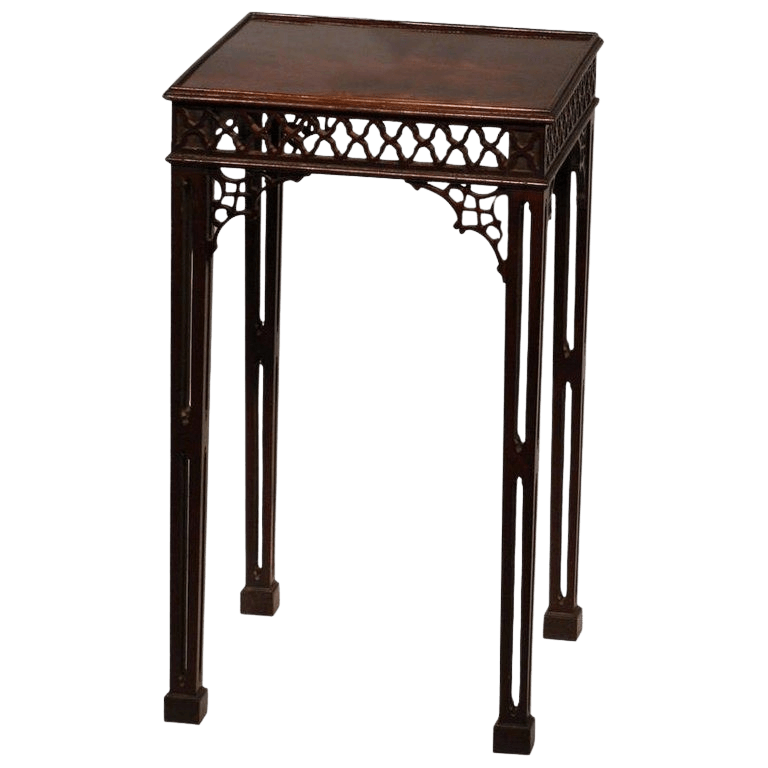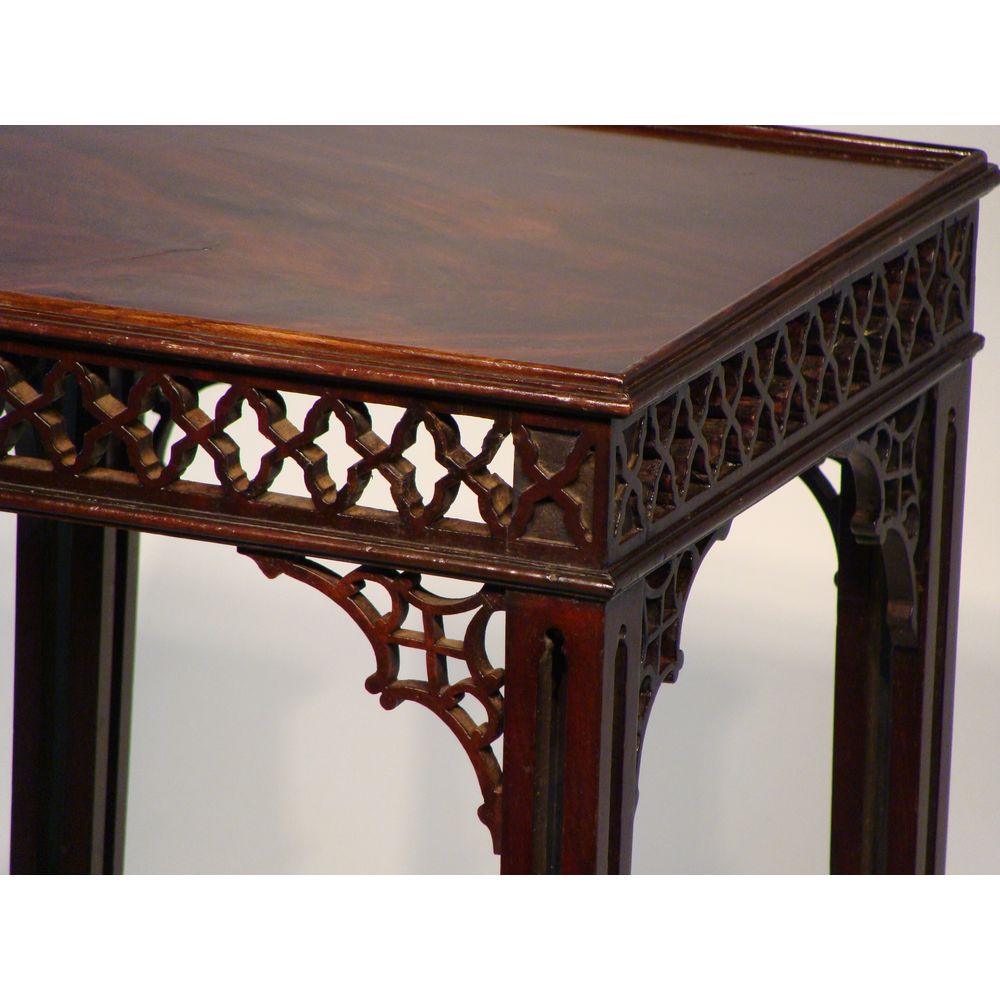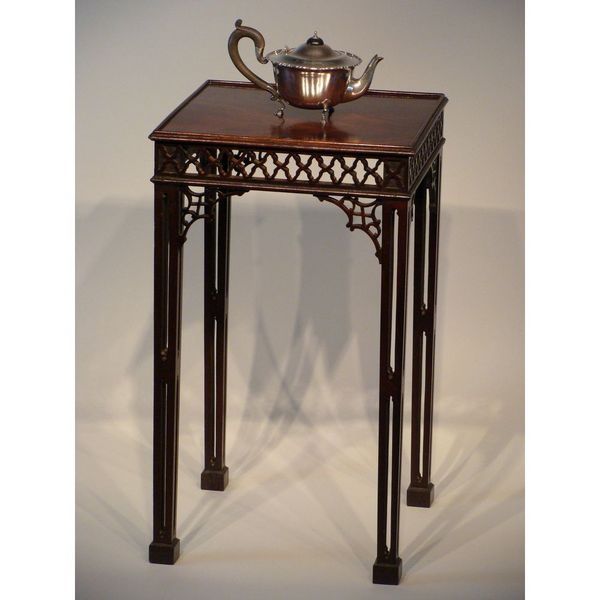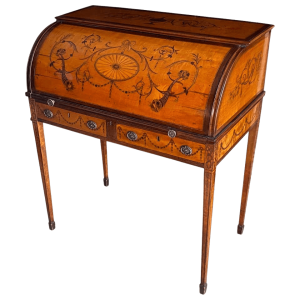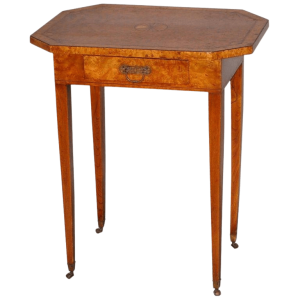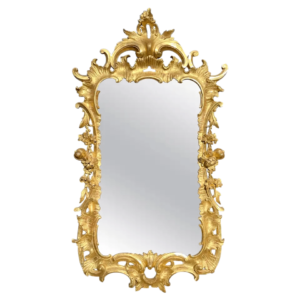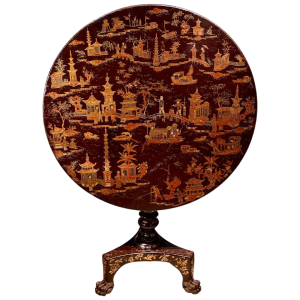Description
A ‘Chinese’ Chippendale style kettle or urn stand.
The square top of this late 18th century mahogany kettle/ urn stand is of very good colour, and bordered with a simple beaded edge.
The frieze finely carved with open fretwork. The angles similarly set with open fretwork.
Raised on channeled open fret square legs terminating in block feet, formerly with castors.
Useful as a sophisticated small side table/ lamp table/ occasional table.
This antique urn table, being very fragile, is a rare survivor.
Its original use was to support a samovar, urn or kettle in the elaborate preparation of tea, which was hugely expensive at the time. Often made with a small pull-out slide to hold a drinking cup.
The consumption of tea by eighteenth century wealthy society gave rise to these rare, delicate, and costly purpose-made tables, much sought after by collectors today. Accompanying the kettle stand would have been an expensive, lockable tea caddy.
Literature:
‘Tea And The Tea Table In 18th century England’, Pickering Chatto, UK.
‘FINE 18TH CENTURY FURNITURE AND WORKS OF ART’, Norman Adams Collection, British Antiques Catalogue, C. Claxton Stevens, Stewart Whittington.
Norman Adams was one of the finest dealers in the world of English furniture. He specialized, amongst many exquisite things, in Chippendale kettle/ urn tables.
Ralph Edwards CBE FSA illustrates a similar “Mahogany Urn Stand carved with frets” circa 1755, in his ‘Shorter Dictionary of English Furniture’, (Country Life, Hamlyn, London, fourth impression 1972) p. 492. He adds: “These stands appear to have gone out of fashion by circa 1800, their place being taken by small occasional tables”.



